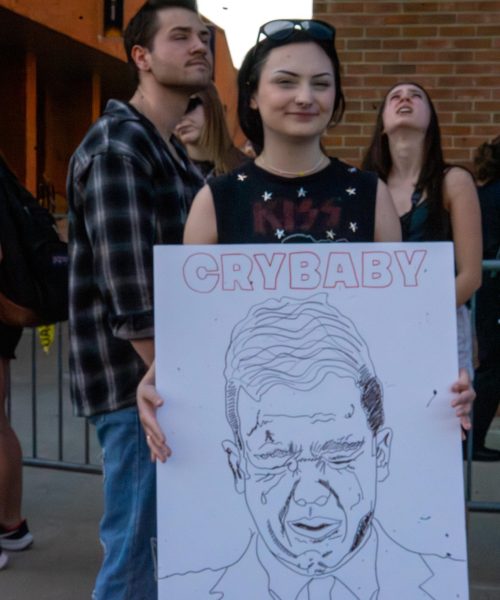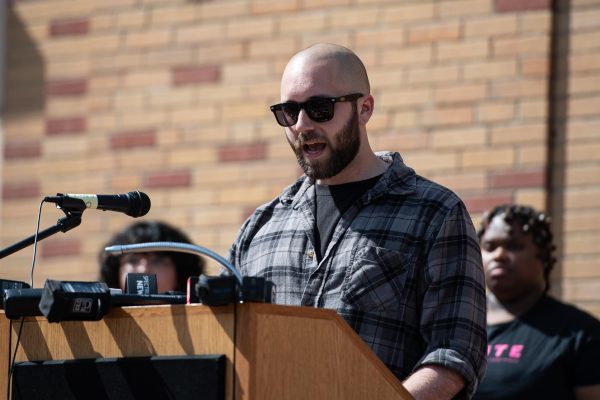Young people taking prescription drug abuse to college
March 8, 2007
COLLEGE PARK, Md. (U-WIRE) – If there’s any one thing recreational drug experts are likely to remember about this generation, it would probably be that young people are refusing to follow the drug use trends of yesterday.
This generation’s predecessors might have been content to dabble in cocaine, try marijuana or drop ecstasy. But nowadays, recreational drug use is far more likely to begin with a prescription and an orange bottle – a trend troubling drug experts who say the potentially dangerous pharmaceuticals showing up in dorm rooms and even college libraries are the product of habits likely formed in high school, according to a newly released analysis of several studies conducted by the Partnership for a Drug-free America that examined drug use among highschoolers over four years. Conner, a freshman art history major, said few students in his circle have experimented with harder drugs.
“I don’t know that many kids that have done coke, none that have tried crack, and only a few that have dropped acid. I can’t even count all of the ones who’ve taken Adderall,” he said. “In my freshman year of high school, I took it at 9 at night and stayed up all night to do math homework.”
And unlike the trends of previous generations – which often followed drugs providing brief euphorias – the 18-to-25 set today are far more likely to use pharmaceuticals for a wide range of purposes.
“I don’t know what I would do without it,” said Catherine, who earlier had taken a dose of the Attention Deficit Hyperactivity Disorder drug Adderall. “There’s no way I could have kept my scholarship if I didn’t use it.”
Strewn across Catherine’s dorm room floor were laptops, textbooks and notes from a variety of classes. Also on the floor was freshman art history major Marianne, who said during a study break that when she took Adderall before college, it was for different reasons than studying.
“When we would go out drinking back then, it would help us stay up. In high school, I used it for fun, as a diet pill, or to sell it,” Marianne said. “I never take it for fun anymore.”
The pressures of college coursework often prompt students to move toward depending on drugs like Adderall as a substance for academic success rather than for an occasional high, and as many as 20 percent of college students have used Adderall or the similar ADHD treatment Ritalin, according to a study released by the National Center on Addiction and Substance Abuse in 2004.
Prescription painkillers have also experienced a sharp rise, according to an analysis of several drug use studies performed by the Partnership for a Drug-Free America over the past four years. Use of the powerful painkiller OxyContin jumped 2.7 percent to 3.5 percent, and Vicodin use jumped from 6.0 percent to 6.3 percent.
During the same period, marijuana use dropped from 30.1 percent to 25.8 percent, the analysis showed.
Closer to home, researchers here found last spring that students in College Park reported ADHD treatments like Adderall and Ritalin are easily available and in widespread use, said Erin Artigiani, deputy director of policy and governmental affairs for the Center for Substance Abuse Research at the university. Students participating in the study were from a diverse background, Artigiani said, representing those at high and low risk for drug use.
“People are using these prescription medications instead of coffee or energy drinks because they felt that they were safe, long-lasting and more effective … as well as having fewer calories,” Artigiani said. “In our key findings, alcohol, marijuana and, as far as stimulants go, Adderall and Ritalin were the most easy to get according to the panel.”
Freshman psychology major Nina is one student who began using Adderall in high school and has never considered obtaining a prescription because the drug is so easy to get.
“The first time I took it was in high school for AP exams when I had eight straight hours of testing,” Nina said. “It makes me feel absurdly alert. I feel like I could stare at millions of pages and never get bored, you focus so intently.”
Marianne and Catherine said they’ve used Adderall so long, they’ve built up a tolerance requiring them to take the drug in higher doses for effect. Sometimes they need as much as 75 mg of time-release pills over a 48 hour span for intense cramming sessions. Adderall comes in capsules of up to 30 mg.
“I weigh about a hundred pounds, so I know I shouldn’t be taking that much,” Marianne said, her eyes focused on a homework assignment. “But if I don’t, I’m lazy and don’t accomplish anything.”
Although many common side effects of abusing such medications are headaches, anxiety, dehydration and skin rashes, Kendra Smoak, who leads the Alcohol & Other Drug Peer Education programs at the Health Center, said the drugs carry more dangerous effects such as triggering of a pre-existing medical condition like an irregular heartbeat. Combining the drugs with alcohol is even more concerning, Smoak said.
“When you take stimulants with alcohol, you may not feel as drunk because an upper counters the effect,” Smoak said. “Are students talking about it? Yes. Are we educating students about the harmful effects of abusing prescription meds? Yes, definitely.”
For Catherine and Marianne, however, warnings about side effects are far from their minds.
“As many negative effects as there are, the positives are so much better – you perform well at school and stay on task all throughout the day,” said Catherine. “Everybody in white suburbia is on a prescription for something.”
EDITOR’S NOTES: The names of students in this story were changed to allow the students to speak more candidly about their drug habits.























